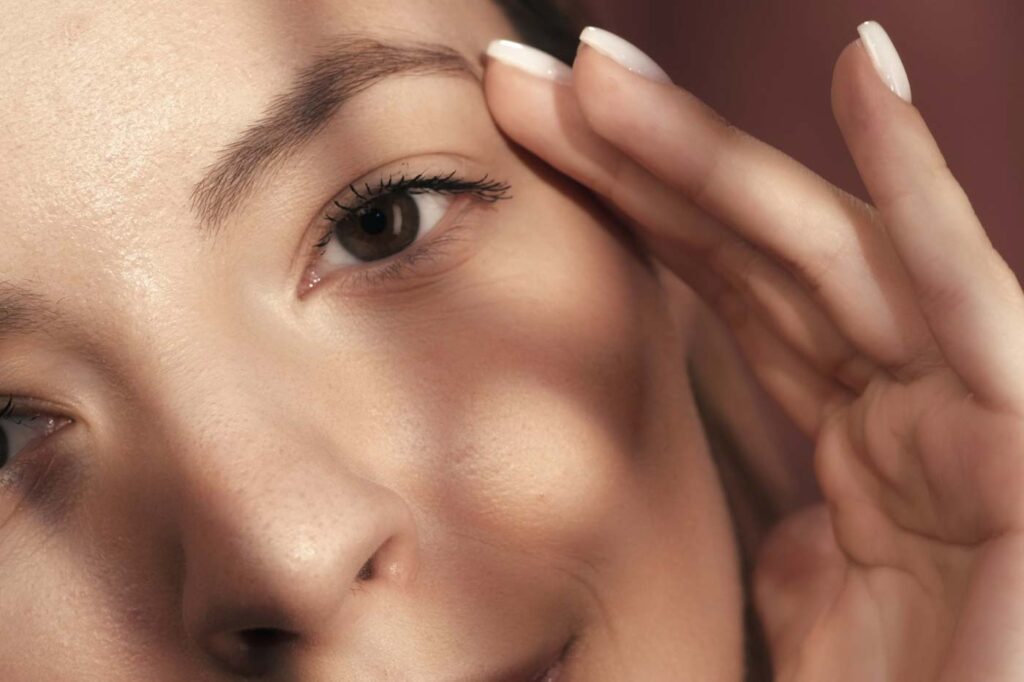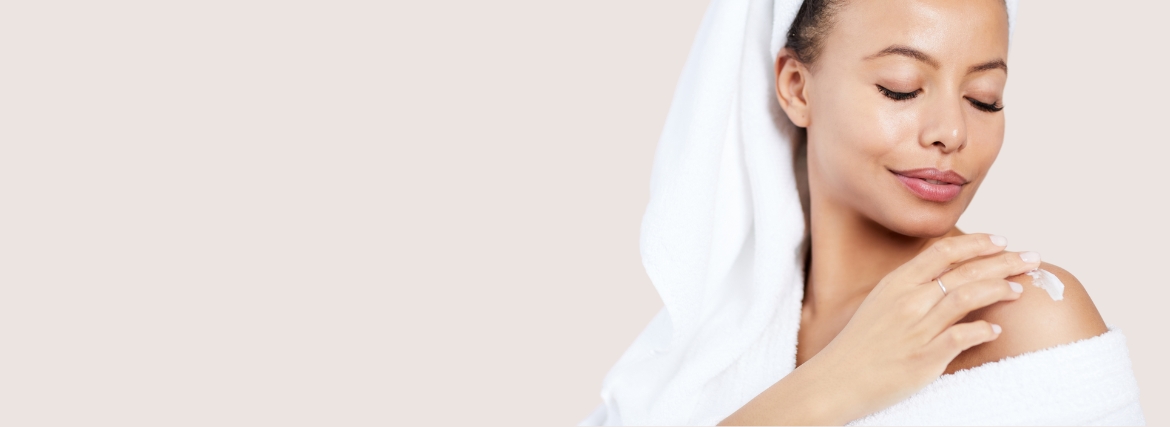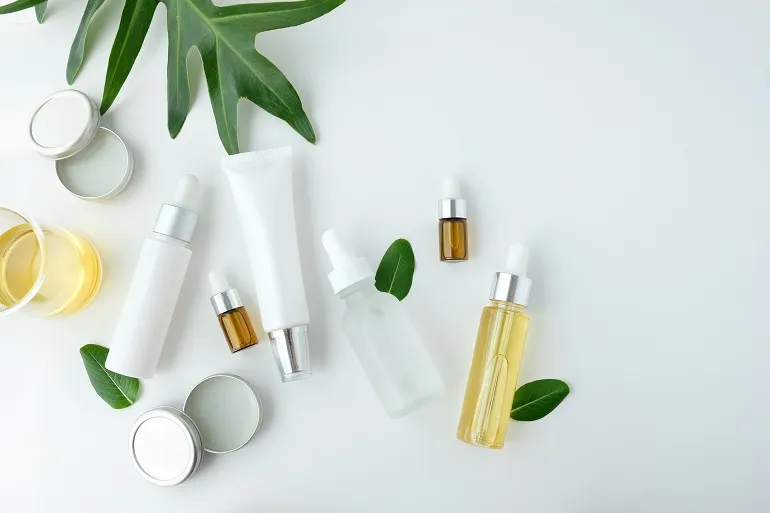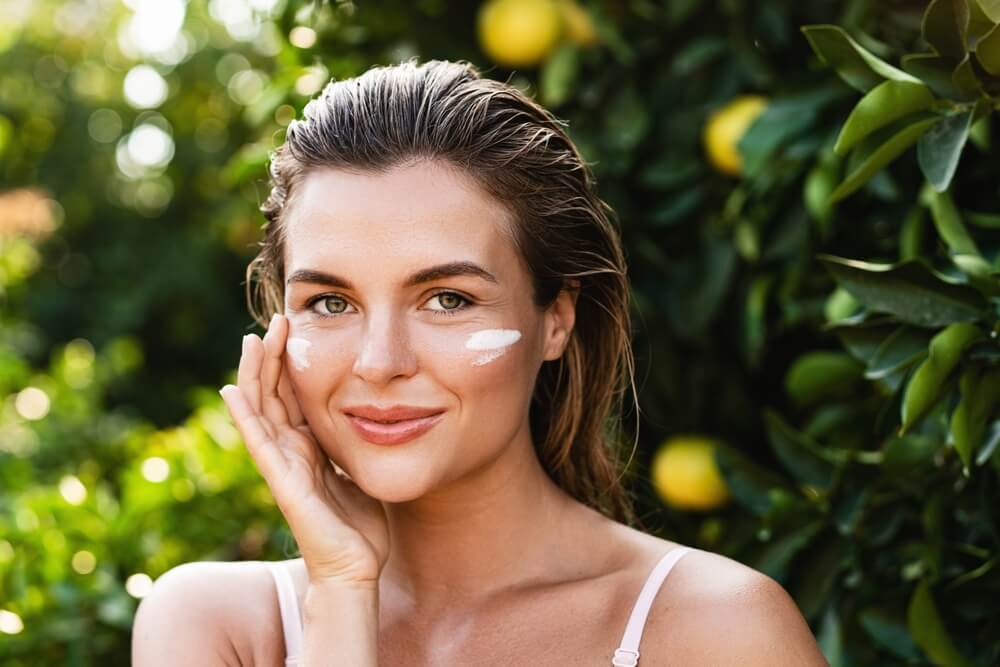As the summer sun fades, many individuals experience the lingering effects of sun exposure, including dryness, irritation, and premature aging. Addressing these concerns is essential for maintaining healthy, radiant skin throughout the year. This article offers practical strategies and essential ingredients that can effectively restore moisture, repair damage, and promote overall skin health post-summer.
By understanding how to integrate effective skincare practices, such as proper hydration, targeted treatments, and sun protection, you can combat the adverse effects of sun exposure. Whether you seek immediate relief from dryness or long-term solutions to enhance your skin’s resilience, the insights provided here will equip you with the tools you need for effective skin recovery.
Table of Contents
Nurturing Hydration Strategies for Post-Summer Skin
As the summer sun fades and autumn approaches, it’s essential to transition your skincare routine to nurture and hydrate your skin effectively. Prolonged exposure to UV rays, chlorinated water, and outdoor activities can leave your skin feeling parched and dehydrated. Understanding how to remedy this can transform your skin from dull and dry to radiant and rejuvenated. Here are some innovative hydration strategies tailored to rejuvenate your skin in the post-summer months.
1. Embrace a Hydrating Cleansing Routine
Your journey to hydrated skin begins with a gentle cleanse. Post-summer, your skin may be more vulnerable due to sun exposure. Transitioning to a hydrating cleanser that contains glycerin or hyaluronic acid can help retain moisture and prevent additional dryness. These ingredients draw water into the skin, offering an immediate boost in hydration without stripping natural oils.
2. Optimize Your Moisturizing Products
When selecting moisturizers, seek out those featuring rich, nourishing ingredients such as ceramides, shea butter, or jojoba oil. These elements not only hydrate but also fortify your skin’s natural barrier, promoting long-lasting moisture retention. Additionally, consider layering a hydrating serum underneath your moisturizer, especially those with added antioxidants like vitamin C, to combat free radicals and enhance your skin’s overall health.
3. Introduce Humidifiers into Your Environment
Indoor heating can exacerbate skin dryness as humidity levels drop in the cooler months. Utilizing a humidifier not only improves indoor air quality but also adds moisture back into the environment, helping your skin stay hydrated from the outside in. This is particularly beneficial if you spend significant time in air-conditioned or heated environments.
4. Hydrate from Within
Never underestimate the importance of hydration from the inside out. Drinking ample water is crucial, but incorporating hydrating foods into your diet can further amplify your efforts. Foods rich in water content such as cucumbers, watermelons, and oranges can help enhance your skin’s hydration levels. Additionally, consider supplements like Omega-3 fatty acids to support your skin’s lipid barrier.
5. The Power of Sheet Masks
For an instant hydration boost, consider integrating sheet masks into your skincare regimen. Look for masks that contain potent moisturizers like hyaluronic acid, aloe vera, and essential oils. They can provide a quick pick-me-up and deeply nourish your skin after those sun-filled days. Regular use can lead to a noticeable improvement in skin texture and overall hydration.
6. Protect Your Skin During Outdoor Activities
If you’re enjoying outdoor activities during the fall, remember that sun protection is still crucial. Use a broad-spectrum sunscreen with SPF 30 or higher, as sun damage can still occur, leading to further dryness and irritation. Look for sunscreens that are more hydrating and contain skin-loving ingredients such as hyaluronic acid and Vitamin E.
7. Schedule Regular Exfoliation
Exfoliating your skin helps remove dead skin cells that can hinder moisture absorption. However, be mindful of your approach; opt for gentle exfoliating products containing natural enzymes or alpha-hydroxy acids (AHAs). Exfoliating 1-2 times a week will allow your hydrating products to penetrate better and leave your skin smoother and more radiant.
In summary, implementing these nurturing hydration strategies post-summer not only revives your skin’s moisture levels but also prepares it to combat the challenges of the changing seasons. As you explore the essentials of skin repair in the following sections, remember that a well-hydrated base is the foundation of healthy, glowing skin.
For a deeper dive into skincare ingredients that further enhance hydration, check out Verywell Health’s guide on hyaluronic acid. This valuable resource can provide insights on why this ingredient is a game-changer for your post-summer skincare regimen.
Essential Ingredients for Ultimate Skin Repair
Achieving radiant and healthy skin requires not only a consistent skincare routine but also the use of effective ingredients that cater to skin repair. Each ingredient serves a unique purpose, addressing various skin concerns from dryness to aging. Understanding these ingredients can empower you to make informed choices for your skin health. Here are some of the most essential components to look for in your skincare products.
1. Hyaluronic Acid
Hyaluronic acid is a powerful humectant that can hold up to 1,000 times its weight in water. This makes it an excellent choice for hydration, especially after summer’s drying effects on the skin. By drawing moisture from the environment into the skin, hyaluronic acid ensures that skin remains plump and youthful. Look for serums or moisturizers with this star ingredient to restore your skin’s moisture balance.
2. Vitamin C
Known for its brightening properties, Vitamin C is a potent antioxidant that helps to fight free radicals, which can damage the skin and lead to premature aging. Incorporating Vitamin C into your skincare routine can enhance your skin’s texture, diminish dark spots, and promote an even skin tone. It is especially beneficial after sun exposure, working to repair sun-induced damage while boosting collagen production.
3. Niacinamide
Niacinamide, or vitamin B3, is a multi-functional skincare ingredient that helps in reducing inflammation, regulating oil production, and improving skin barrier function. Its anti-inflammatory properties make it a perfect choice for those experiencing post-summer breakouts and redness. Products infused with niacinamide promote a healthier complexion and can significantly improve the overall texture of your skin.
4. Peptides
Peptides are short chains of amino acids that play a crucial role in skin regeneration and repair. When included in skincare products, they can help increase collagen production, leading to firmer and more elastic skin. Utilizing peptide-infused creams or serums can effectively target signs of aging, such as fine lines and sagging skin, making them a worthy addition to your post-summer skincare regimen.
5. Retinol
Retinol, a derivative of Vitamin A, is renowned in the skincare community for its ability to accelerate cell turnover and stimulate collagen synthesis. Surprisingly effective at combating sun damage, retinol can help slough off dead skin cells and reveal brighter, more youthful skin underneath. However, due to its potency, it’s recommended to introduce retinol gradually into your routine to avoid irritation.
6. Essential Fatty Acids
Essential fatty acids, notably Omega-3 and Omega-6, are vital for maintaining a healthy skin barrier and reducing inflammation. These fats help to keep skin hydrated and reduce the impact of environmental stressors. Products containing oils like argan, evening primrose, or borage seed oil can replenish your skin’s lipid content, which may have been compromised during the sun-soaked summer months.
7. Aloe Vera
Aloe vera is often hailed for its soothing properties, making it an ideal ingredient for skin recovery. It not only provides hydration but also has anti-inflammatory benefits that can calm irritated skin. After sun exposure, products containing aloe vera can help reduce redness and promote healing.
8. Antioxidants
Incorporating a variety of antioxidants in your skincare can combat oxidative stress caused by environmental factors. Ingredients like green tea extract, coenzyme Q10, and resveratrol offer protection against free radical damage while enhancing your skin’s overall vitality. Antioxidant-rich formulations not only protect but also repair skin at the cellular level.
In conclusion, the key to effective skin repair lies in understanding and utilizing these essential ingredients. They contribute not only to immediate hydration and healing but also to long-term skin health. For further insights into skincare best practices, consider exploring reputable resources like NCBI’s comprehensive resources on skin health.
Creating a Holistic Skin Regeneration Routine
Achieving luminous, healthy skin requires a comprehensive approach that goes beyond surface-level treatments. A holistic skin regeneration routine not only addresses the visible signs of aging and damage but also considers the underlying health of your skin. This routine encompasses various elements, from skincare products to lifestyle choices, creating a synergistic effect that promotes skin healing and rejuvenation.
Understanding Your Skin Type
Before embarking on any skin regeneration routine, it’s critical to understand your unique skin type. Each type—whether it be oily, dry, combination, or sensitive—requires specific products and care methods. Here are some steps to identify your skin type:
- Cleanse your face: Use a gentle cleanser and leave your skin bare for an hour.
- Observe how it feels: Note whether your skin feels tight, oily, or comfortable.
- Check for shine: For combination skin, oily areas may appear in the T-zone, while dry patches may be present elsewhere.
Understanding your skin type allows you to tailor your holistic routine for maximum effectiveness.
Key Components of a Holistic Skin Regeneration Routine
A comprehensive skin regeneration routine involves several key components:
- Gentle Cleansing: Start with a mild, hydrating cleanser to remove dirt and impurities without stripping the skin of its natural oils.
- Exfoliation: Regular exfoliation (1-3 times a week) helps remove dead skin cells. Consider using both physical (scrubs) and chemical exfoliants (AHAs and BHAs) to achieve a balanced approach.
- Hydration: Incorporate a hydrating serum containing ingredients like hyaluronic acid or glycerin. These attract moisture and help to plump the skin.
- Targeted Treatments: Use products specifically designed to address issues like pigmentation, wrinkles, or acne. Look for ingredients such as retinoids, vitamin C, and peptides.
- Moisturization: Choose a rich moisturizer suitable for your skin type. Ingredients like ceramides and essential fatty acids are excellent for maintaining skin barrier function.
- Sun Protection: Daily use of broad-spectrum SPF is crucial, regardless of the weather. Look for SPF 30 or higher to prevent sun damage which can hinder skin regeneration.
Each of these components plays an integral role in supporting skin health, but the magic happens when they are used in harmony.
Incorporating Nutrition and Lifestyle
While topical care is important, a truly holistic approach means considering what you consume and how you live. Here are essential tips for supporting your skin from the inside out:
- Stay Hydrated: Drink plenty of water throughout the day to keep your skin hydrated and flush out toxins.
- Nourish with Antioxidants: Include a diet rich in antioxidants—think berries, nuts, and leafy greens—to combat oxidative stress and promote skin health.
- Limit Sugars and Processed Foods: These can lead to skin issues like acne and inflammation. Opt for whole, unprocessed foods whenever possible.
- Prioritize Sleep: Aim for 7-9 hours of quality sleep per night. Sleep is vital for skin regeneration and recovery.
- Manage Stress: Practices such as yoga, meditation, or even regular exercise can significantly reduce stress levels, which in turn supports healthier skin.
Mindfulness in Your Routine
In addition to physical care and nutrition, the mindset you bring to your skincare routine is crucial. Practicing mindfulness while applying products allows you to connect better with your skin and appreciate the self-care process. Consider these ideas:
- Set Intentions: Before starting your routine, take a moment to set a positive intention, whether it’s self-love or embracing your natural beauty.
- Slow Down: Rather than rushing through your routine, take your time. Enjoy the sensory experience of each product and its application.
- Reflect: Keep a skincare journal to note changes in your skin, which helps you understand what works and what doesn’t.
By integrating mindfulness into your routine, not only can you enhance the effects of your skincare products, but you may also boost your overall well-being.
Seeking Professional Guidance
Finally, consider consulting a dermatologist or skincare professional to create a personalized plan. They can recommend tailored products and treatments based on your skin’s specific needs. For deeper rejuvenation, treatments like chemical peels or microdermabrasion might be beneficial. Ensure the professionals you consult are knowledgeable and up-to-date with the latest skincare advancements. For more in-depth insights and consultations, you can visit Douglas J MedSpa.
Creating a holistic skin regeneration routine requires a dedication to understanding your skin, nourishing it from the inside out, and practicing self-care. By weaving together these various threads, you can cultivate healthy, radiant skin that reflects your inner vitality.
Sun Protection and Recovery for Lasting Radiance
Achieving and maintaining radiant skin is a journey that requires diligence, especially after the summer months when sun exposure can wreak havoc on our skin. While most of us know the importance of using sunscreen during summer outings, many overlook its significance in protecting and recovering our skin throughout the year. This section delves into effective sun protection strategies and post-sun recovery methods to promote long-lasting radiance.
The Importance of Sunscreen
**Sunscreen** is your primary defense against the sun’s harmful ultraviolet (UV) rays. Ultraviolet A (UVA) and ultraviolet B (UVB) rays can lead to premature aging, skin discoloration, and even increased risks of skin cancer. To ensure comprehensive sun protection, consider the following:
- SPF Rating: Choose a broad-spectrum sunscreen with an SPF of at least 30 for daily wear. This rating blocks about 97% of UVB rays.
- Water Resistance: If you plan to swim or sweat, opt for a water-resistant formula that lasts for at least 40 to 80 minutes.
- Reapplication: Reapply sunscreen every two hours or immediately after swimming, towel drying, or heavy sweating.
- Consistency is Key: Make it a habit to apply sunscreen daily, regardless of the weather, since up to 80% of the sun’s rays can penetrate clouds.
Post-Sun Recovery Techniques
After a day in the sun, your skin needs special care to recover. The right recovery techniques can help reverse damage, hydrate, and rejuvenate your skin. Below are some essential tips for effective post-sun recovery:
- Hydrate: Start by drinking plenty of water to help your skin rehydrate from the inside out. It’s a crucial step for cellular repair and overall skin health.
- Apply Soothing Products: Use after-sun treatments containing natural ingredients like aloe vera, calendula, or chamomile. These compounds can calm irritation and reduce redness.
- Exfoliation: Gentle exfoliation can help remove dead skin cells that may have accumulated from sun exposure. However, it’s essential to wait 48 hours after sun exposure to avoid further irritation.
- Moisturize Deeply: Invest in a high-quality moisturizer to replenish lost moisture. Ingredients such as hyaluronic acid, glycerin, and ceramides can significantly enhance skin hydration.
Incorporating Antioxidants
Antioxidants play a vital role in safeguarding your skin from sun damage by combatting free radicals caused by UV exposure. Including antioxidant-rich products in your skincare regimen post-summer can help restore the skin’s natural glow. Look for formulations that contain:
- Vitamin C: Known for its brightening properties, Vitamin C can also help fade dark spots and improve skin texture.
- Vitamin E: This potent antioxidant not only retains moisture but also helps in reducing UV damage.
- Green Tea Extract: Rich in polyphenols, green tea can calm the skin and reduce inflammation.
The Role of a Holistic Approach
For sustained radiance, consider a holistic approach that combines skincare, nutrition, and lifestyle. Focus on consuming a balanced diet rich in fruits, vegetables, and healthy fats to nourish your skin from within. Regular exercise promotes circulation, which can enhance skin health.
Additionally, consult with a skincare professional for tailored advice and treatments that suit your unique skin needs. Treatments such as chemical peels, microdermabrasion, or laser therapy can complement your daily routine and offer deeper restoration.
In conclusion, protecting and recovering your skin from sun damage is essential for maintaining lasting radiance. By implementing effective sun protection strategies and committing to a thoughtful recovery regimen, you can ensure that your skin stays healthy, vibrant, and beautiful throughout the year.
For further reading on the benefits of antioxidants and skin protection, explore this Healthline article detailing how different compounds contribute to skin health.

To maintain healthy, radiant skin, especially after summer, prioritize hydration and effective ingredients in your skincare routine. Key components include hyaluronic acid for moisture retention, Vitamin C for brightening and collagen production, and niacinamide to reduce inflammation and improve skin texture. Regular exfoliation (1-2 times a week) and targeted treatments with retinol or peptides can enhance your skin’s overall appearance. Additionally, always use a broad-spectrum sunscreen with at least SPF 30 to protect against UV damage.
Focus on a holistic approach that includes proper nutrition, hydration, and lifestyle choices. Consume antioxidant-rich foods, like fruits and vegetables, and stay hydrated to support skin health from within. Mindfulness in your routine can enhance the benefits of your products, while consulting with a skincare professional ensures a personalized approach that addresses your specific skin needs. Implementing these strategies will help your skin recover from sun exposure and maintain its vibrancy throughout the year.













